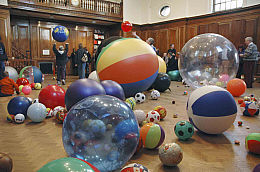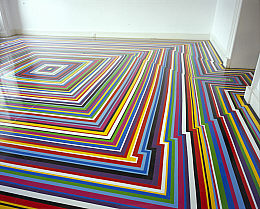Nick Kaplony, the Exhibitions Organiser at the Pump House Gallery in London, has kindly written a review of my work to support an Arts Council application I’m writing. It can be odd to see your name in print.
When first encountering the work of John Elliott one is struck simultaneously and strongly by qualities of colour and structure. Working largely in the realm of sculpture, even forays into other mediums carry a strong sense of preoccupation with these qualities. Be it in combining disparate elements of found materials and detritus in ‘Baba Yagga’s House’ a bizarre hybrid sculpture, or translating email messages into a string of virtual DNA online, his work seems to look at how ‘modules’ connect and how one thing follows another.
The colours vivid and strong, the strange objects Elliott creates bring to mind the building bricks a child uses to first learn about how shapes fit together and how different parts of the world relate. In ‘Untitled 2006 – 01’ an ornate patterned ceramic globe is slotted into a brightly striped block. Here two opposites (both in pattern and structure) have been combined to hugely satisfying effect. They fit. The analogy of childlike enquiry can be continued in reference to the sense of play that is implicit in Elliott’s practice: There is in an experiment taking place in his work, where a bizarre hypothesis is being tested or a slightly absurd logic is being followed. Indeed Elliott frequently references science and genetics in his titles indicating a link with a scientific interest of fundamentals. The work ‘Sonic Hedgehog mRNA’ is a good example of this fusing of science and child’s-play in which a ball of down is propped up on glossily painted ‘legs’ to resemble the structure of a chemical molecule.
Elliott continues to build a practice with an ever more eloquent visual vocabulary exploring the world of ‘things’ and ‘stuff’ with an undiminished and infectious enthusiasm. His work charms and engages, be it with seductive use of colour and surface, or with its idiosyncratic wit. Watch this space!
Nicholas Kaplony
Exhibitions Organiser
Pump House Gallery


